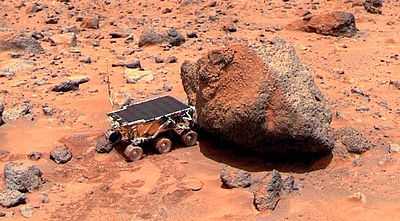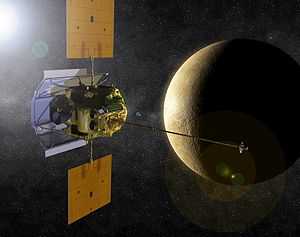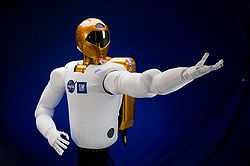Unmanned spaceflight



Unmanned spaceflight is all spaceflight activity without a necessary human presence in space. This includes all space probes, satellites and robotic spacecraft and missions. Unmanned spaceflight is the opposite of manned spaceflight, or usually called human spaceflight.
Unmanned spaceflight
Subcategories of unmanned spaceflight are “robotic spacecraft” (objects) and “robotic space missions” (activities).
A robotic spacecraft is a spacecraft with no humans on board, that is usually under telerobotic control. A robotic spacecraft designed to make scientific research measurements is often called a space probe.
Unmanned space missions are those using remote-controlled spacecraft. The first unmanned space mission was Sputnik I, launched October 4, 1957 to orbit the Earth. Space missions where animals but no humans are on-board are considered unmanned missions. Space missions with a mixed human and other animal crew are considered manned missions.
Benefits
Many space missions are more suited to telerobotic rather than crewed operation, due to lower cost and lower risk factors. In addition, some planetary destinations such as Venus or the vicinity of Jupiter are too hostile for human survival, given current technology. Outer planets such as Saturn, Uranus, and Neptune are too distant to reach with current crewed spaceflight technology, so telerobotic probes are the only way to explore them. Telerobotics also lets you explore regions that are vulnerable to contamination by Earth micro-organisms since spacecraft can be sterilized. Humans can't be sterilized in the same way as a spaceship, as we coexist with numerous micro-organisms, and these micro-organisms are also hard to contain within a spaceship or spacesuit.
Telepresence
Telerobotics becomes telepresence when the time delay is short enough to permit control of the spacecraft in close to real time by humans. Even the two seconds light speed delay for the Moon is too far away for telepresence exploration from Earth. The L1 and L2 positions permit 400 ms round trip delays which is just close enough for telepresence operation.
For Mars, then Mars capture orbits would permit telepresence operation of rovers on the surface, and would give a low cost way for humans to explore the surface (compared to surface missions), as well as protect the surface from human borne contamination, and protect the humans from any harm from surface conditions.
Telepresence has also been suggested as a way to repair satellites in Earth orbit from Earth.
The Exploration Telereobotics Symposium in 2012 explored this and other topics[1]
See also
- List of unmanned spacecraft by program
- Timeline of Solar System exploration
- Timeline of artificial satellites and space probes
- List of Solar System probes
References
- ↑ Exploration Telereobotics Symposium May 2-3, 2012 at NASA Goddard Space Flight Center.
- Erik Gregerson (2010): "An Explorer´s Guide to the Universe – Unmanned Space Missions", Britannica Educational Publishing, ISBN 978-1-61530-052-5 (eBook)
External links
- Tedd E. Hankins, H. Paul Shuch (1987-03-04). "REFLECTIONS – manned vs. unmanned spaceflight". Retrieved 2011-04-15.